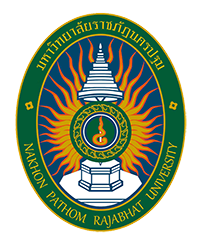 การประชุมวิชาการระดับชาติ ครั้งที่ 16
|
| Title | Monitoring of Insecticide Resistance on Brown Planthopper (Nilaparvata lugens (Stål)) Population in Northeastern Region of Thailand |
|---|---|
| Other Titles: | การติดตามความต้านทานของสารป้องกันกำจัดแมลงต่อประชากรเพลี้ยกระโดดสีน้ำตาล (Nilaparvata lugens (Stål)) ในภาคตะวันออกเฉียงเหนือ |
| Authors EN |
|
| Authors TH |
|
| Keywords | Rice,Insecticide resistance,Median lethal dose (LD50),Nilaparvata lugens (Stål),Northeastern Region of Thailand |
| Issue Date | 13-Aug-2024 |
| Publisher | The 16th NPRU National Academic Conference Nakhon Pathom Rajabhat University |
| Abstract | The brown planthopper, or Nilaparvata lugens (Stål), is a significant insect pest of rice, often resulting in damage to rice every growth stage leading to outbreaks in Thailand's irrigation and rainfed rice fields. Application of chemical is an effortless and rapid solution. Farmers use this technique on large scales. The insect population develops resistant to the insecticide when insecticides are misused, applied incorrectly, in the wrong way, at the wrong time, or over a long period of time. Monitoring insecticide resistance serves as a guide for planning the application of renewable insecticides and selecting the type or group of insecticide that is appropriate for insect resistance. The study aimed to investigate insecticide resistance in the BPH population in the northeastern region of Thailand in 2023. BPH populations were collected from rice fields in the northeastern area. Utilizing the topical bioassay method, three common agricultural insecticide types imidacloprid, dinotefuran, and ethiprole were tested for resistance levels based on their toxicity values (LD50) against populations of brown planthoppers in four provinces: Nong Khai, Khon Kaen, Sakon Nakhon and Ubon Ratchathani. According to the experiment's findings, BPH populations in each of the four provinces had resistance ratios ranging from 1.00 to 4.41, indicating that they have not yet adapted to these three insecticides. In Nong Khai Province, imidacloprid showed the highest LD50 value, measuring 2.273 micrograms per gram. In Khon Kaen Province, dinotefuran had the highest LD50 value at 0.127 micrograms per gram, whereas in Ubon Ratchathani Province, ethiprole had the highest LD50 value at 0.718 micrograms per gram. This resistance monitoring information might be a useful guide for selecting insecticides for the safe and effective management of BPH.
|
| ISBN | 978-974-7063-46-2 |
| URI | https://rdi.npru.ac.th/conference16 |